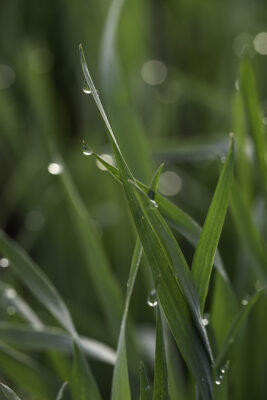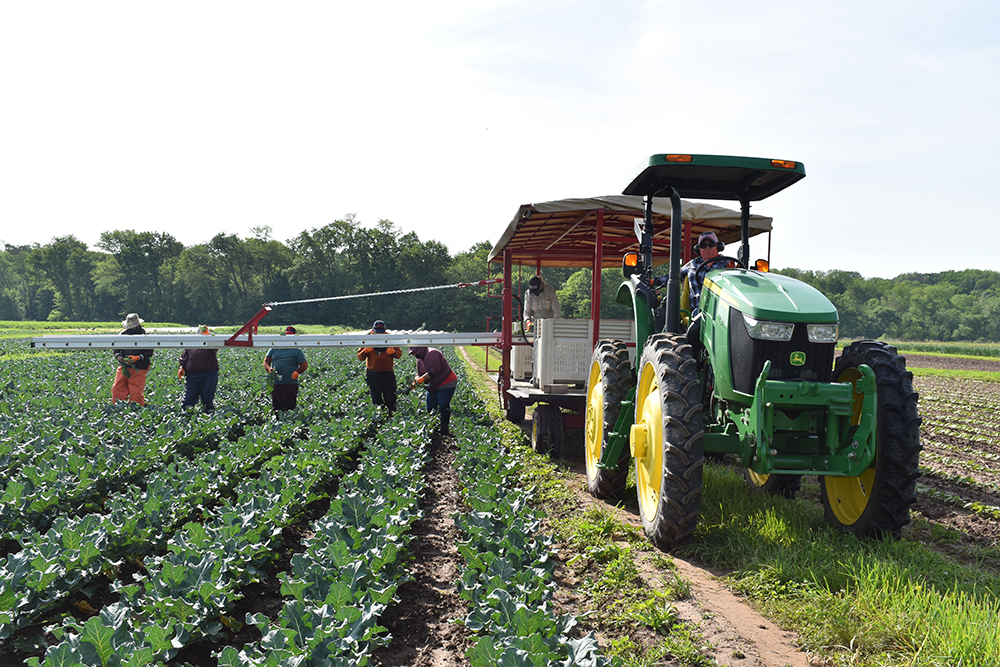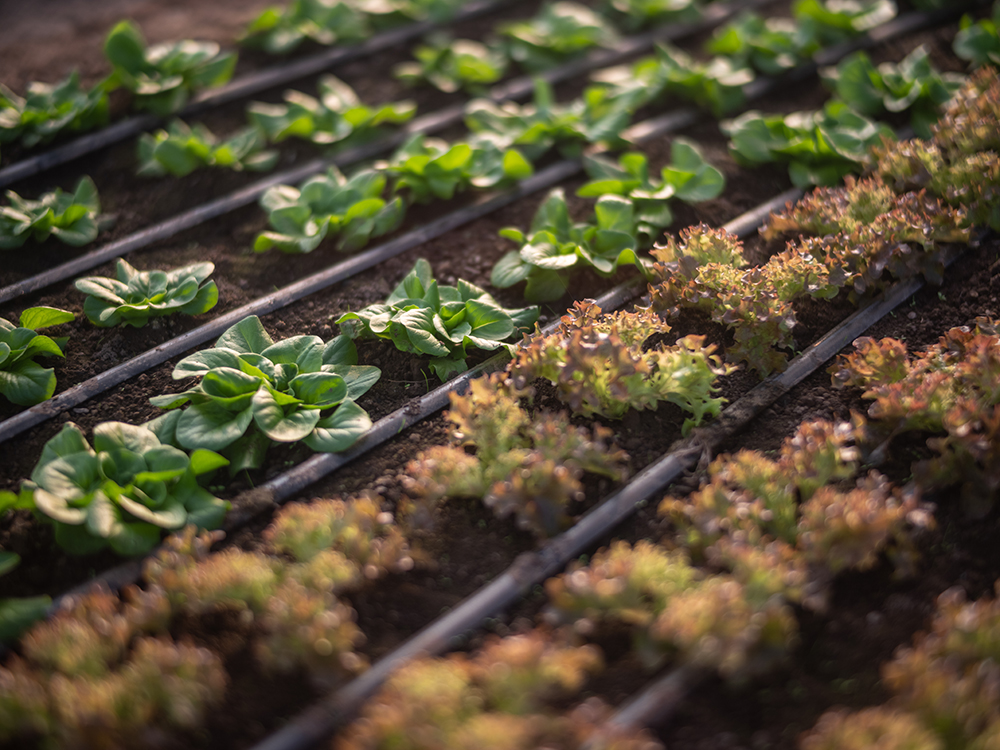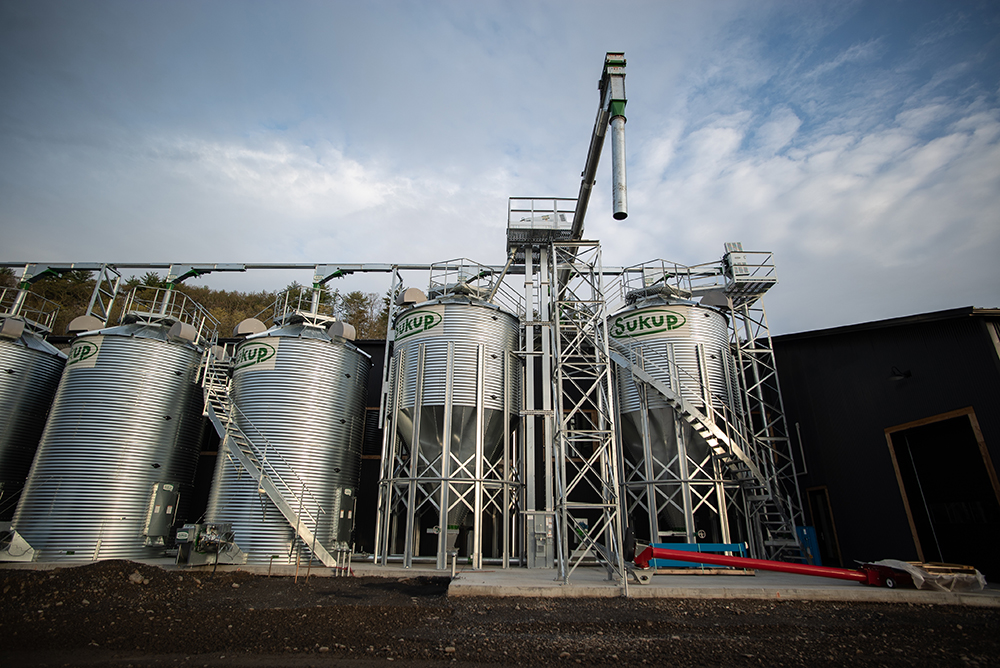By Jeff Arnold, Farm Manager

With each changing season here on the farm, so too shift our routines and rhythms, perhaps none more welcome than those of late autumn and early winter. As a year-round farming operation, the Farm Hub never truly sleeps, but the frosted ground, long shadows, and woolen hats that appear as the sun dips lower in the sky are all welcome harbingers of slower paced winter days and much needed time to reflect and recharge.
While 2021 was not the uncomplicated, pandemic-free year we all had hoped it would be, from a grower’s perspective here at the Farm Hub, it could have been much worse. The primary variable was, as is usually the case, the weather.
While it was certainly a wet year in this region, it was also an abundant year, and we were incredibly fortunate to escape most of the devastating rain storms that affected many farms. Climate change in the Northeast seems to be manifesting most notably in the form of increased summer and fall precipitation. Not only are we seeing significant rainfall events become more frequent, but they are becoming more intense as well. Over 8 inches of rain fell here in the first half of July – more than twice the historic average rainfall for the entire month. That was on the low end of the spectrum for the region.
The rain did send some ripple effects into the rest of our growing season: increased disease and weed pressure, significant yield reductions in our wheat and dry bean crops, and equipment and labor bottlenecks during busy times. Despite the challenges, though, we were thankful to experience periods of dryness long enough to stay on schedule and, overall, saw a bountiful growing season.


Our vegetable operation is on track to donate more than any year previous – nearly 350,000 pounds of organic produce in 2021.
Our Wash and Pack facility is currently at maximum capacity, holding around 200,000 pounds of storage crops like carrots, potatoes, onions, squash, and garlic. The greenhouses have been cleared of their summer crops – tomatoes, peppers, and cucumbers – and are now full of spinach, kale, lettuce, and other cold hardy greens. These crops will be washed, packed, and distributed through the beginning of spring when our field season begins anew. A main objective of the Farm Hub is to distribute fresh produce year-round, including the coldest months of the year, so this means going into winter with storage coolers and greenhouses full.


The field crops operation harvested over one million pounds of organic grains this season. Of these, over 300,000 pounds will be used to produce regional food products including several types of locally milled baking flour, an assortment of dry beans, dent corn for cornmeal and tortillas, and popping corn. Some of the grains will also be used to produce feed for many of the region’s organic livestock operations. Our new granary is now operational and will be used this winter to clean, dry, store, and package the grain crops. As our capacity to grow, process, and distribute food grade grains grows, we will continue to expand the acreage devoted to these crops.

What is remarkable about agriculture is that it has the potential to be either a significant source of or solution to many of the global challenges that are upon our doorstep today. This year and the past several have given us a glimpse into what is in store if we stay the current course: weather patterns becoming less predictable, extreme weather events more common, and a food system further in disrepair. But the paradigm is already shifting on many farms. This year, our entire 1,500-acre farm became certified organic. One-third of our field crops were produced on land that is under no-till management, while the rest of our production land is tilled only minimally. By reducing or eliminating tillage, the land is better able to shield itself from periods of severe weather – heavy rainfall, drought, and temperature extremes alike. The soil absorbs and stores atmospheric carbon while organic matter levels increase and microbial life is stimulated.

We are conserving our riparian areas and managing field edges to support biodiversity. We are also implementing practices to help make our food system more equitable for those who grow the food as well as those who consume it. The food system only works if every piece is supported – from the smallest soil organisms to humans and the land itself.
Farms can be much more than places that just grow crops. Farms can be – and need to be – places that cultivate thriving communities, healthy land, nourished humans, and a climate no longer in crisis. With that in mind, we are thankful for a bountiful season and looking forward to a slower pace in winter, rested backs, and time to reimagine a food system that is part of the solution.
